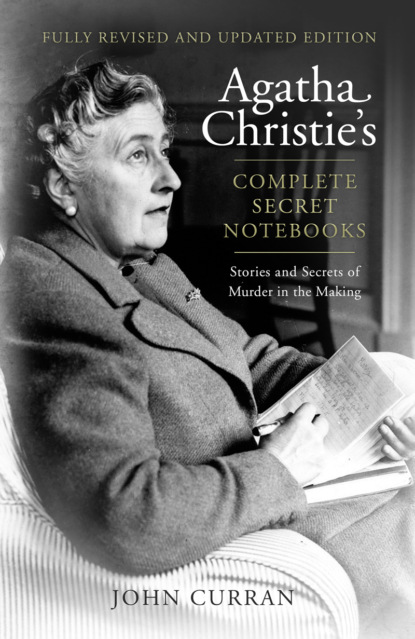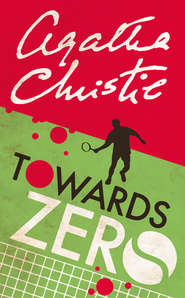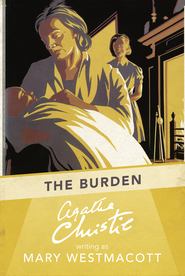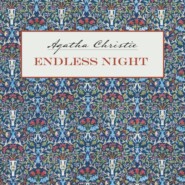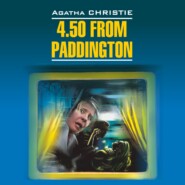По всем вопросам обращайтесь на: info@litportal.ru
(©) 2003-2024.
✖
Agatha Christie’s Complete Secret Notebooks
Настройки чтения
Размер шрифта
Высота строк
Поля
The Beginning of a Career (#ulink_f19309a0-59ed-515b-be83-be22ca6e4fdc)
That was the beginning of the whole thing. I suddenly saw my way clear. And I determined to commit not one murder, but murder on a grand scale.
And Then There Were None, Epilogue
SOLUTIONS REVEALED
Death on the Nile • Evil under the Sun • The Hollow • Lord Edgware Dies • The Murder at the Vicarage • The Mysterious Affair at Styles • Ordeal by Innocence • Witness for the Prosecution
The Golden Age of British detective fiction is generally regarded as the period between the end of the First World War and that of the Second, i.e. 1920 to 1945. This was the era of the country house weekend enlivened by the presence of a murderer, the evidence of the adenoidal under-housemaid, the snow-covered lawn with no footprints and the baffled policeman seeking the assistance of the gifted amateur. Ingenuity reached new heights with the fatal air embolism via the empty hypodermic, the poison-smeared postage stamp, and the icicle dagger that evaporates after use.
During these years all of the names we now associate with the classic whodunit began their writing careers. The period ushered in the fiendish brilliance of John Dickson Carr, who devised more ways to enter and leave a locked room than anyone before or since; it saluted the ingenuity of Freeman Wills Crofts, master of the unbreakable alibi, and Anthony Berkeley, pioneer of multiple solutions. It saw the birth of Lord Peter Wimsey, created by Dorothy L. Sayers, whose fiction and criticism did much to improve the literary level and acceptance of the genre; the emergence of Margery Allingham, who proved, with her creation Albert Campion, that a good detective story could also be a good novel; and the appearance of Ngaio Marsh, whose hero, Roderick Alleyn, managed to combine the professions of policeman and gentleman. Across the Atlantic it welcomed Ellery Queen and his penultimate chapter ‘Challenge to the Reader’, defying the armchair detective to solve the puzzle; S.S. Van Dine and his pompous creation Philo Vance breaking publishing records; and Rex Stout’s overweight creation Nero Wolfe, solving crimes while tending his orchid collection.
Cabinet ministers and archbishops extolled the virtues of a good detective story; poets (Nicholas Blake, otherwise Cecil Day Lewis), university dons (Michael Innes, otherwise Professor J.I.M. Stewart), priests (Rev. Ronald Knox), composers (Edmund Crispin, otherwise Bruce Montgomery) and judges (Cyril Hare, otherwise Judge Gordon Clark) contributed to and expanded the form. R. Austin Freeman and his scientific Dr John Thorndyke sowed the seeds of the modern forensic crime novel; Gladys Mitchell introduced a psychologist detective in her outrageous creation Mrs Bradley; and Henry Wade prepared the ground for the police procedural with his Inspector Poole. Books were presented in the form of correspondence in Sayers’ The Documents in the Case, as verbatim question-and-answer evidence in Philip Macdonald’s The Maze and, ultimately, as actual police dossiers complete with physical clues of telegrams and train tickets in Dennis Wheatley’s Murder off Miami. Floor plans, clue-finders, timetables and footnotes proliferated; readers became intimately acquainted with the properties of arsenic, the interpretation of train timetables and the intricacies of the 1926 Legitimacy Act. Collins Crime Club and the Detection Club were founded; Ronald Knox issued a Detective Story Decalogue and S.S. Van Dine wrote his Rules.
And Agatha Christie published The Mysterious Affair at Styles.
Poirot Investigates …
In An Autobiography Christie gives a detailed account of the genesis of The Mysterious Affair at Styles. By now the main facts are well known: the immortal challenge – ‘I bet you can’t write a good detective story’ – from her sister Madge, the arrival in Torquay of First World War Belgian refugees who inspired Poirot’s nationality, Christie’s knowledge of poisons from her work in the local dispensary, her intermittent work on the book and its eventual completion during a two-week seclusion in the Moorland Hotel, at the encouragement of her mother. This was not her first literary effort, nor was she the first member of her family with literary aspirations. Both her mother and sister Madge wrote, and Madge actually had a play, The Claimant, produced in the West End before Agatha did. Agatha had already written a long dreary novel (her own words) and a few stories and sketches. She had even had a poem published in the local newspaper. While the story of the bet is plausible, it is clear that this alone would not be spur enough to plot, sketch and write a successful book. There was obviously an inherent gift and a facility with the written word.
Although she began writing the novel in 1916 (The Mysterious Affair at Styles is actually set in 1917), it was not published for another four years. And its publication was to demand consistent determination on its author’s part as more than one publisher declined the manuscript. Until, in 1919, John Lane, The Bodley Head asked to meet her with a view to publication. But, even then, the struggle was far from over.
The contract, dated 1 January 1920, that John Lane offered Christie took advantage of her publishing naivety. (Remarkably, the actual contract is for The Mysterious Affair of Styles.) She was to get 10 per cent only after 2,000 copies were sold in the UK and she was contracted to produce five more. This clause led to much correspondence over the following years. Possibly because she was so delighted to be published or because she had no intention then of pursuing a writing career, it is entirely possible that she did not read the small print carefully.
When she realised what she had signed, she insisted that if she offered a book she was fulfilling her part of the contract whether or not John Lane accepted it. When John Lane expressed doubt as to whether Poirot Investigates, as a volume of short stories rather than a novel, should be considered part of the six-book contract, the by now confident writer pointed out that she had offered them a novel, the non-crime Vision, as her third title. The fact that the publishers refused it was, as far as she was concerned, their choice. It is quite possible that if John Lane had not tried to take advantage of his literary discovery she might have stayed longer with the company. But the prickly surviving correspondence shows that those early years of her career were a sharp learning curve in the ways of publishers – and that Agatha Christie was a star pupil. Within a relatively short space of time she is transformed from an awed and inexperienced neophyte perched nervously on the edge of a chair in John Lane’s office into a confident and businesslike professional with a resolute interest in every aspect of her books – jacket design, marketing, royalties, serialisation, translation and cinema rights, even spelling.
Despite favourable readers’ reports a year earlier, in October 1920 Christie wrote to Mr Willett of John Lane wondering if her book was ‘ever coming out’ and pointing out that she had almost finished a second novel. This resulted in her receiving the projected cover design, which she approved. Ultimately, after a serialisation in 1920 in The Weekly Times, The Mysterious Affair at Styles was published later that year in the USA. And, almost five years after she began it, Agatha Christie’s first book went on sale in the UK on 21 January 1921. Even after its appearance there was much correspondence about statements and incorrect calculations of royalties as well as cover designs. In fairness to John Lane, it should be said that cover design and blurbs were also a recurring feature of her correspondence with Collins throughout her career.
Verdict …
The readers’ reports on the Styles manuscript were, despite some misgivings, promising. One gets right to the commercial considerations: ‘Despite its manifest shortcomings, Lane could very likely sell the novel … There is a certain freshness about it.’ A second report is more enthusiastic: ‘It is altogether rather well told and well written.’ And another speculates on her potential future ‘if she goes on writing detective stories and she evidently has quite a talent for them’. They were much taken with the character of Poirot, noting ‘the exuberant personality of M. Poirot who is a very welcome variation on the “detective” of romance’ and ‘a jolly little man in the person of has-been famous Belgian detective’. Although Poirot might take issue with the description ‘has-been’, it is clear that his presence was a factor in the book’s acceptance. In a report dated 7 October 1919 one very perceptive reader remarked, ‘but the account of the trial of John Cavendish makes me suspect the hand of a woman’. And because her name on the manuscript had appeared as A.M. Christie, another reader refers to Mr Christie.
All the reports agreed that Poirot’s contribution to the Cavendish trial did not convince and needed revision. They were referring to the denouement of the original manuscript, where Poirot’s explanation of the crime comes in the form of his evidence given in the witness box during the trial of John Cavendish. This simply did not work, as Christie herself accepted, and Lane demanded a rewrite. She obliged and, although the explanation of the crime itself remains the same, instead of giving it as witness box evidence Poirot holds forth in the drawing room of Styles, in the type of scene that was to be replicated in many later books.
Sutherland Scott, in his 1953 history of the detective story, Blood in their Ink, perceptively calls The Mysterious Affair at Styles ‘one of the finest firsts ever written’. It contained some of the features that were to distinguish many of her later titles.
Poirot and the Big Four
Hercule Poirot
There is an irony in the fact that although Agatha Christie is seen as a quintessentially British writer, her most famous creation is ‘foreign’, a Belgian. The existence of detective figures with which she would have been familiar may have been a contributing factor. Poe’s Chevalier Dupin, Robert Barr’s Eugène Valmont, Maurice Leblanc’s Arsène Lupin and A.E.W. Mason’s Inspector Hanaud of the Sûreté were already, in 1920, established figures in the world of crime fiction. And a title Christie specifically mentions in An Autobiography is Gaston Leroux’s 1908 novel The Mystery of the Yellow Room, with its detective, Monsieur Rouletabille. Although largely forgotten nowadays, Leroux was also the creator of The Phantom of the Opera.
At the time it was also considered necessary for the detective figure to have a distinguishing idiosyncrasy, or, even better, a collection of them. Holmes had his violin, his cocaine and his pipe; Father Brown had his umbrella and his deceptive air of absent-mindedness; Lord Peter Wimsey had his monocle, his valet and his antiquarian book collection. Lesser figures had other no less distinctive traits: Baroness Orczy’s Old Man in the Corner sat in an ABC Teashop and tied knots, Ernest Bramah’s Max Carrados was blind and Jacques Futrelle’s Professor Augustus S.F.X. Van Dusen was known as The Thinking Machine. So Poirot was created Belgian with impressive moustaches, little grey cells, overweening vanity, both intellectual and sartorial, and a mania for order. Christie’s only mistake was in making him, in 1920, a retired member of the Belgian police force; this, in turn, meant that by 1975 and Curtain: Poirot’s: Last Case, he was in his thirteenth decade. Of course, in 1916 Agatha Christie had no idea that the fictional little Belgian would outlive herself.
Readability
As early as this first novel one of Christie’s great gifts, her readability, was in evidence. At its most basic, this is the ability to make readers continue from the top to the bottom of the page and then turn that page; and then make them do that 200 times in the course of any, and in her case, every, book. This facility deserted her only in the very closing chapter of her writing career, Postern of Fate being the most challenging example. This gift was, with Christie, innate; and it is doubtful whether it can be learned anyway. Thirty years after The Mysterious Affair at Styles the reader at Collins, reporting on They Came to Baghdad, wrote in an otherwise damning report: ‘It is eminently readable and passes the acid test of holding the interest throughout.’
Christie’s prose, while by no means distinguished, flows easily, the characters are believable and differentiated, and much of each book is told in dialogue. There are no long-winded scenes of question-and-answer, no detailed scientific explanations, no wordy descriptions of people or places. But there is sufficient of each to fix the scene and its protagonists clearly in the mind. Every chapter, indeed almost every scene, pushes the story on towards a carefully prepared solution and climax. And Poirot does not alienate the reader with either the irritating facetiousness of Sayers’ Lord Peter Wimsey, the pedantic arrogance of Van Dine’s Philo Vance or the emotional entanglements of Bentley’s Philip Trent.
A comparison with almost any other contemporaneous crime title shows what a chasm existed between Christie and other writers, most of them now long out of print. As illustration, the appearance of two other detective-story writers also coincided with the publication of The Mysterious Affair at Styles. Freeman Wills Crofts, a Dubliner, published The Cask in 1920 and H.C. Bailey published Call Mr Fortune the previous year. Crofts’ detective, Inspector French, showed painstaking attention in following every lead, and specialised in the unbreakable alibi. However, this very meticulousness militated against an exciting reading experience. H.C. Bailey began his career as a writer of historical fiction but turned to crime fiction, much of it featuring his detective, Reginald Fortune. The two writers, although skilled plot technicians in both novel and short story form, lacked the vital ingredient of readability.
Plotting
Christie’s plotting, coupled with this almost uncanny readability, was to prove a peerless combination. An examination of her Notebooks shows that although this gift for plotting was innate and in profusion, she worked at her ideas, distilling and sharpening and perfecting them, and that even the most inspired titles (e.g. Crooked House, Endless Night, The ABC Murders) were the result of meticulous planning. The secret of her ingenuity with plot lies in the fact that this dexterity is not daunting. Her solutions turn on everyday information: some names can be male or female, a mirror reflects but it also reverses, a sprawled body is not necessarily a dead body, a forest is the best hiding place for a tree. She knows she can depend on the reader’s erroneous interpretation of an eternal triangle, an overheard argument or an illicit liaison. She counts on our received prejudice that retired Army men are harmless buffoons, that quiet, mousy wives are objects of pity, that all policemen are honest and all children innocent. She does not mystify us with the mechanical or technical; or insult us with the clichéd or the obvious; or alienate us with the terrifying or the gruesome.
In almost every Christie title the mise-en-scène features a closed circle of suspects: a strictly limited number of potential murderers from which to choose. A country house, a ship, a train, a plane, an island – all of these provided her with a setting that limits the number of possible killers and ensures that a complete unknown is not unmasked in the last chapter. In effect, Christie says, ‘Here is the flock of suspects from which I will choose my villain. See if you can spot the black sheep.’ It can be as few as four (Cards on the Table) or five (Five Little Pigs) or as many as the coach full of travellers on the Orient Express. The Mysterious Affair at Styles is typical of the country-house murders beloved of Golden Age writers and readers: a group of assorted characters sharing an isolated setting long enough for murder to be committed, investigated and solved.
Although an element of the solution in The Mysterious Affair at Styles turns on a scientific fact, it is not unfair as the reader is told from the outset of the investigation what the poison is. Admittedly, anyone with knowledge of toxicology has a distinct advantage, but the information is readily available. Other than this mildly controversial item, all the information necessary to arrive at the solution is scrupulously given: the coffee cup, the scrap of material, a fire lit during a July heatwave, the medicine bottle. And, of course, it is Poirot’s passion for neatness that gives him the final proof; and in a way that was to be reused, a decade later, in the play Black Coffee. But how many readers will notice that Poirot has to tidy the mantelpiece twice (Chapters 4 and 5), thereby discovering a vital link in the chain of guilt?
Fairness
Throughout her career Christie was quite happy to provide her readers with clues, confident in the knowledge that, in the words of her great contemporary R. Austin Freeman, ‘the reader would mislead himself’. How many readers will properly interpret the clue of the calendar in Hercule Poirot’s Christmas, or the velvet stole in Death on the Nile, or the love letters in Peril at End House? Or who will correctly appreciate the significance of the wax flowers in After the Funeral, or Major Palgrave’s glass eye in A Caribbean Mystery, or the telephone call in Lord Edgware Dies, or the beer bottle in Five Little Pigs?
While not in the same class of ‘surprise solution’ as Murder on the Orient Express, The Murder of Roger Ackroyd or Crooked House, the solution to The Mysterious Affair at Styles still manages to surprise. This is due to the use of one of Christie’s most effective ploys: the double-bluff. It is the first example in her work of this powerful weapon in the detective-story writer’s armoury. Here the most obvious solution, despite an initial appearance of impossibility, transpires to be the correct one after all. In An Autobiography she explains that ‘The whole point of a good detective story was that it must be somebody obvious but at the same time for some reason, you would then find that it was not obvious, that he could not possibly have done it. Though really, of course, he had done it.’ She returned throughout her career to this type of solution; and particularly when the explanation revolves around a murderous alliance: The Murder at the Vicarage, Evil under the Sun, Death on the Nile. Lethal partnerships aside, Lord Edgware Dies and The Hollow also feature this device. And she can take the bluff one step further, in Ordeal by Innocence and, devastatingly, in Witness for the Prosecution.
In The Mysterious Affair at Styles we are satisfied that Alfred Inglethorp is both too obvious and too dislikeable to be the murderer; and, on a more mundane level, he was absent from the house on the night of his wife’s death. So we discount him. As a further strengthening of the double-bluff, part of his plan depends on being suspected, arrested, tried and acquitted, thus ensuring his perpetual freedom. Unless carefully handled this solution runs the risk of producing an anticlimax. Here it is skilfully avoided by uncovering the presence of an unexpected conspirator in the person of hearty Evelyn Howard, who, throughout the novel, has denounced her employer’s husband (her unsuspected lover) as a fortune hunter – as indeed he is.
Productivity
Although no one, least of all Christie herself, knew it at the time, The Mysterious Affair at Styles was to be the first in a substantial corpus of books that were to issue from her typewriter over the next half century. She was equally successful in the novel and the short story form and alone among her contemporaries she also conquered the theatre. She created two famous detectives, a feat not duplicated by other crime writers. During the height of her powers publication could hardly keep pace with creation – 1934 saw the publication of no fewer than four crime titles and a Mary Westmacott, the name under which she wrote six non-crime novels published between 1930 and 1956. And this remarkable output is also a factor in her continuing success. It is possible to read a different Christie title every month for almost seven years; at which stage one can start all over again. And it is possible to watch a different Agatha Christie dramatisation every month for two years. Very few writers, in any field, have equalled this record.
And so Christie’s work continues to transcend every barrier of geography, culture, race, religion, age and sex; she is read as avidly in Bermuda as in Balham, she is read by grandparents and grandchildren, she is read on e-book and in graphic novel format in this twenty-first century as eagerly as in the green Penguins and The Strand magazine of the last. Why? Because no other crime writer did it so well, so often or for so long; no one else has ever matched her combination of readability, plotting, fairness and productivity.
And no one ever will.
2 (#ulink_1a403f52-bb3f-5154-8bb2-01a4384c259e)
The Evidence of the Notebooks (#ulink_1a403f52-bb3f-5154-8bb2-01a4384c259e)
Like a conjuror, he whipped from a drawer in the desk two shabby exercise books.
The Clocks, Chapter 28
SOLUTIONS REVEALED
The Murder of Roger Ackroyd • Sad Cypress
Although mentioned by both of her biographers, Janet Morgan and Laura Thompson, Agatha Christie’s Notebooks remain a closely protected, and largely unknown, treasure. After the death of her mother, Rosalind Hicks ensured their safety in Greenway House and, with the exception of Torquay Museum, they have never been publicly displayed. But Christie does briefly mention them in An Autobiography:
Of course, all the practical details are still to be worked out, and the people have to creep slowly into my consciousness, but I jot down my splendid idea in an exercise book. So far so good – but what I invariably do is lose the exercise book. I usually have about half a dozen on hand, and I used to make notes in them of ideas that had struck me, or about some poison or drug, or a clever little bit of swindling that I had read about in the paper. Of course, if I had kept all these things neatly sorted and filed and labelled, it would save me a lot of trouble. However, it is a pleasure sometimes, when looking vaguely through a pile of old note-books to find something scribbled down, as: Possible plot – do it yourself – girl and not really sister – August – with a kind of sketch of a plot. What it’s all about I can’t remember now; but it often stimulates me, if not to write that identical plot, at least to write something else.
A closer examination of some of these remarks will give a clearer idea of what she meant. Using Christie’s own words as a guide, we can begin to see the part these Notebooks played in her creative process.
… idea in an exercise book …
Considered as the notes, drafts and outlines for the greatest body of detective fiction ever written (and in many cases, unwritten) these Notebooks are unique and priceless literary artefacts. Viewed as physical objects they are somewhat less impressive. They are before me as I write these words and, at a passing glance, look like the piles of exercise books gathered by teachers at the end of class in schools the world over. Because most of them are just that – exercise books. Red and blue and green and grey exercise books, coverless copybooks ruled with wide-spaced blue lines, small black pocket-sized notebooks: The Minerva, The Marvel, The Kingsway, The Victoria, The Lion Brand, The Challenge, The Mayfair exercise books, ranging in price from The Kingsway (Notebook 72) for 2d to The Marvel (Notebook 28) for a shilling (5p); Notebook 5 represented particularly good value at 4 for 7½d (3p). Inside covers often have ‘useful’ information: a map of the UK, capitals of the world, decimal conversion rates (obviously bought just before or after the introduction of decimal coinage in February 1971). There are covers illustrated by the New York skyline (Notebook 23) or a Mexican volcano (Notebook 18).





